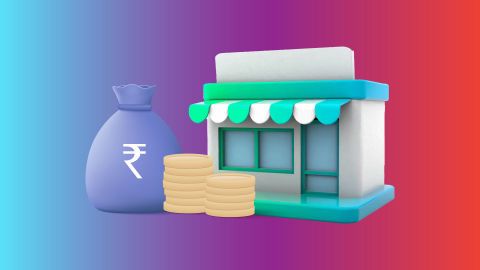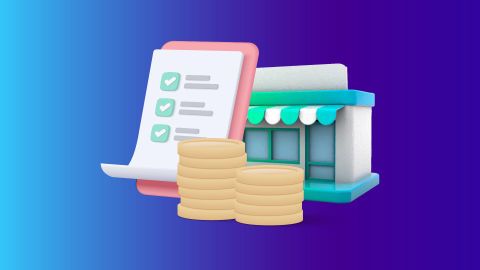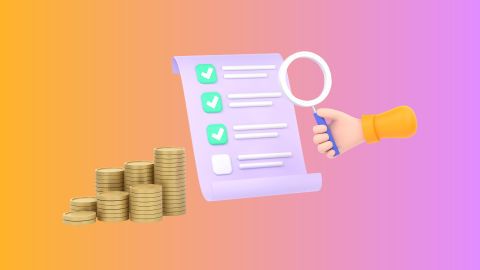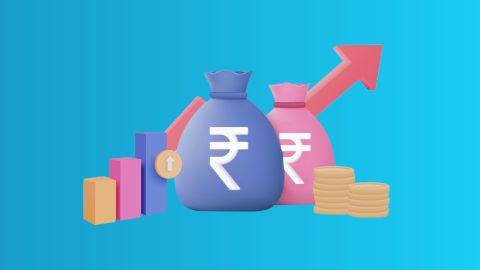Working capital is a financial metric that indicates the liquidity levels of businesses for managing day-to-day expenses and covers inventory, cash, accounts payable, accounts receivable, and short-term debt. It is an indicator of the short-term financial position of an organisation and is also a measure of its overall efficiency.
Concept of working capital
Working capital, or net working capital (NWC), measures a company’s short-term financial health by subtracting current liabilities from current assets. Current assets include cash, accounts receivable, and inventory, while current liabilities encompass accounts payable and short-term debts. Positive working capital indicates a company can easily cover its short-term obligations and invest in operations, reflecting its financial efficiency.
Components of working capital
Component |
Description |
How to optimise |
Cash and cash equivalents |
Funds readily available for use |
Keep a cash reserve for unforeseen expenses |
Accounts receivable |
Amounts owed by customers |
Offer incentives for early payments |
Inventory |
Goods held for sale or production |
Avoid excessive stock, use demand forecasting |
Accounts payable |
Amounts owed to suppliers |
Negotiate favourable payment terms |
Short-term debt |
Loans or debts due within the next year |
Refinance high-interest loans |
Formula to calculate working capital
The working capital formula is:
Working capital = Current assets - Current liabilities
For example, if a company has Rs. 3,00,000 in current assets and Rs. 2,00,000 in current liabilities, the company’s working capital is Rs. 1,00,000 (assets - liabilities).
Let us break down these terms in more detail:
Current assets
Current assets are items owned by your business that can be converted into cash within 12 months. These include:
- Cash in the bank
- Cash equivalents (e.g. investments that can quickly be turned into cash, such as government bonds)
- Accounts receivable (money owed to you, such as unpaid invoices)
- Stock (including raw materials, work-in-progress, finished goods, and packaging)
- Short-term investments
- Prepaid expenses (expenses paid in advance)
Current liabilities
Current liabilities are any bills or debts your business needs to pay within a year. These include:
- Accounts payable (money owed to suppliers)
- Bank overdrafts
- Sales, payroll, and income taxes
- Wages
- Rent
- Short-term loans
- Outstanding expenses
Positive vs. negative working capital
Aspect |
Positive working capital |
Negative working capital |
Definition |
The company has enough short-term assets (like cash, receivables, and inventory) to cover its short-term debts, ensuring smooth business operations. |
The company's short-term liabilities are higher than its short-term assets, leading to cash flow problems and financial instability. |
Business impact |
Strong cash flow, stable operations, and potential for growth. |
Payment delays, financial stress, and risk of bankruptcy. |
Example |
A retail store that has enough cash to pay suppliers and restock products. |
A manufacturer struggling to pay suppliers due to delayed customer payments. |
Investor view |
Viewed as stable and low-risk. |
Seen as high-risk, making it harder to secure funding. |
Solution |
Maintain operational efficiency and reinvest profits wisely. |
Speed up collections, optimise inventory, and renegotiate payment terms. |
Sources of working capital
Companies can manage working capital using:
- Long-term sources – Retained earnings, equity, long-term loans.
- Short-term sources – Trade credit, cash credit, public deposits.
- Spontaneous sources – Credit from suppliers, bills payable.
Types of working capital
There are several types of working capital based on the balance sheet or operating cycle view. A balance sheet view classifies working capital into two types of working capital:
- Net working capital: Net working capital is calculated by subtracting current liabilities from current assets, as shown on the balance sheet. This measure reflects a company’s ability to cover its short-term obligations using its short-term assets, indicating financial stability and operational efficiency.
- Gross working capital: Gross working capital refers to the total amount of current assets listed on the balance sheet. It includes cash, accounts receivable, and inventory, providing insight into a company’s available resources to support its day-to-day operations and growth.
The operating cycle view classifies working capital into temporary (difference between net working capital and permanent working capital) and permanent (fixed assets) working capital.
Working capital cycle
Working capital cycle refers to the time taken to convert net current liabilities and assets into cash by a business. The shorter the working capital cycle, the swifter the company will free up its blocked cash. Businesses strive to lower this working capital cycle to enhance liquidity in the short term. Bajaj Finserv offers working capital loans to address any deficits in working capital and ensure optimal operations.
Additional Read: Importance of capital budgeting
Advantages of working capital
There are several advantages to having adequate working capital, including:
- Improved cash flow management, which can help a business meet its financial obligations and avoid cash shortages.
- Ability to meet unexpected expenses, such as unexpected repairs or emergency purchases, without risking the financial stability of the company.
- Ability to take advantage of new business opportunities, such as expanding into new markets or investing in research and development.
- Increased market share and competitiveness, as a business that can meet customer demand consistently is more likely to succeed in its industry.
- Increased flexibility and resilience, as a business with adequate working capital can easily weather economic downturns or unexpected events.
Limitations of working capital
While working capital is important, poor management can lead to issues such as:
- Cash flow gaps – Business cycles may affect liquidity.
- Missed opportunities – Lack of capital can stop growth.
- High costs – Relying too much on short-term loans increases financial risk.
- Inefficiencies – Poor inventory or credit management can reduce profits.
Solution: Regular financial planning and effective cash flow management can help address these challenges.
Examples of working capital
An example of working capital includes the funds a retail store needs to purchase inventory for its shelves. Suppose a store requires Rs. 10,000 to buy stock for the upcoming holiday season. This Rs. 10,000 represents the working capital needed to ensure the store has enough goods to meet customer demand. As sales occur, the store can use revenue generated from these sales to replenish its working capital by purchasing more inventory. Working capital is crucial for maintaining smooth operations, ensuring adequate inventory levels, and meeting short-term financial obligations.
Why is working capital important?
Working capital is essential for businesses on a daily basis, as they need a steady amount of cash to make regular payments, handle unexpected costs, and buy basic materials required for producing goods.
Effective working capital management ensures smooth operations and can boost the company’s earnings and profits. Managing working capital involves looking after inventory, accounts receivable, and accounts payable. The main goals of working capital management are to maintain the working capital cycle, reduce the cost of capital used in working capital, and maximise the returns on investments in current assets.
Working capital is a straightforward concept, as it is similar to an individual’s cost of living, making it easier to understand. Just like individuals need to collect money they are owed and keep enough cash to cover daily expenses, bills, and other regular costs, businesses must do the same to ensure smooth functioning.
How can a company improve its working capital?
- Optimise inventory management: Reduce excess inventory levels to free up cash and minimise storage costs.
- Accelerate accounts receivable: Incentivise early payments from customers or implement stricter credit policies to shorten the accounts receivable period.
- Extend accounts payable: Negotiate longer payment terms with suppliers to delay cash outflows and preserve working capital.
- Streamline operational efficiency: Identify and eliminate inefficiencies in processes to reduce costs and improve cash flow.
- Monitor cash flow: Regularly track cash flow forecasts and identify areas where cash is tied up unnecessarily.
















